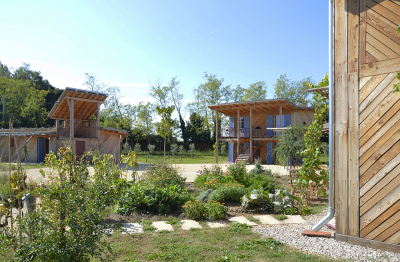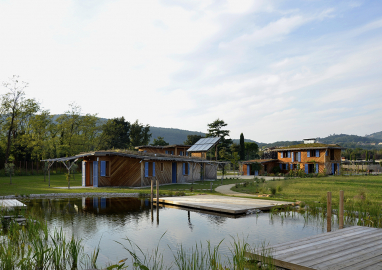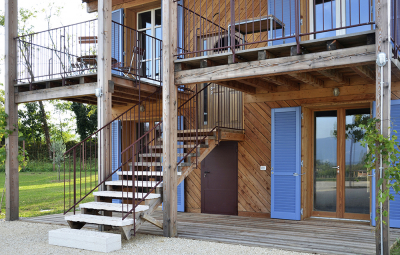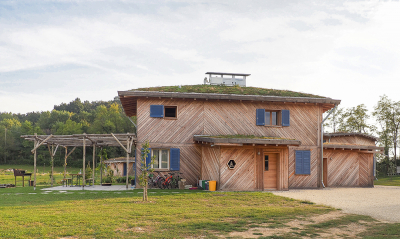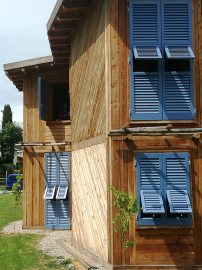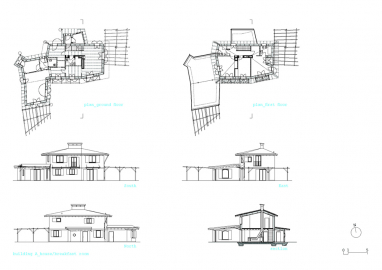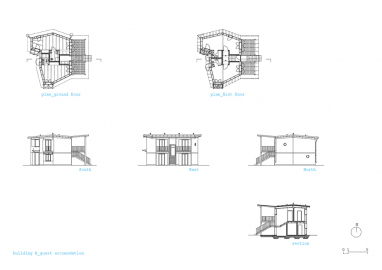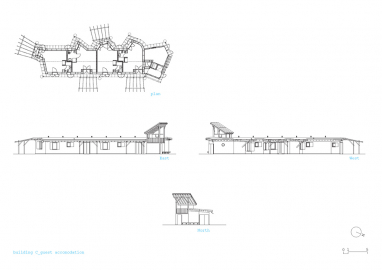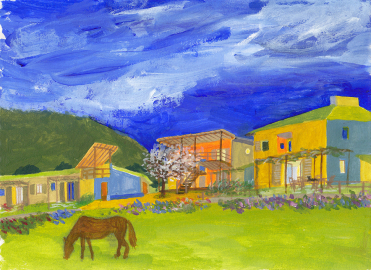Houses and Riding Centre
A riding centre, with houses for owners and guest accommodation built in timber and straw bales, situated in the countryside near Lake Garda.
The parts of the projects are arranged like a necklace, freely positioned along the edges of the area, around a large central meadow which is left intact. The land slopes down from west to east, and in that direction unfolds the broadest view of the Veronese hills: the structures for horses are situated on the eastern part of the area, while the houses are sited to the west, which is higher and open to the landscape. The three houses and the small square which connects them form a sort of hamlet which is the densest point of the necklace. In each of the houses, there coexist three different orientations: the solar one, towards the south, so that each internal space can benefit from a natural passive thermal gain during winter (with suitable shading to contrast summer heat); an opening towards the east with its distant views; and thirdly, the outlook onto the square.
The buildings are shaped and built to minimize their energy needs and plant systems. From the outset, at the explicit request of the client, to which we agreed enthusiastically, it was established that they should be built with straw bales in a timber framework. It would take too long to list only a part of the qualities of this wonderful building system: suffice to say that, at a cost equivalent to ordinary construction, this permits a highly isolating, massive and breathable building envelope, entirely made from renewable resources which are 80% waste materials (straw is the part of cereal crops which is generally discarded) produced in a very brief growing period.
Although the construction technique is the same, the diverse use of the buildings determines a different thermal model and therefore a distinct organisation of the space. The owners’ house and the clubhouse, each having as a sole source of heating a wood-burning stove with thermic inertial accumulation, are structured around a central load-bearing core made from fireproof material, inside which there is the combustion and smoke channelling, which also hosts a rudimentary and efficient system of passive summer ventilation. This is not the case in the guest accommodation, whose winter heating and summer cooling is produced by radiating floor panels, fuelled by a geo-thermal system and photovoltaic panels.
Two visible aspects of the project have prosaic origins: the facades in larch planks positioned diagonally (operating as structural bracing for the framework) should initially have been plastered, and were left bare also considering the notable economic saving; the use of recovered windows and doors of various shapes, materials and origins, implied a considerable reduction in costs, in addition to representing an ecologically sound practice of recycling.

